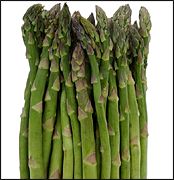Whether you accept it, avoid it or live somewhere in between, insurance coverage has become a defining issue for our profession. Patients increasingly expect to use their benefits, practitioners want to be compensated fairly for their time and expertise, and the system itself remains – at best – fragmented. The encouraging news is that coverage has expanded in meaningful ways. The challenging news is that reimbursement, across the board, remains inadequate.
Herbs & Botanicals
Wild asparagus (tian men dong)
What is wild asparagus? What is it used for?
Although it is sometimes referred to as Chinese asparagus, wild asparagus originated in the Mediterranean. It is now a popular herb in both Chinese and Korean medicine, and grows in the mountainous regions of both countries. The root is used medicinally.
Wild asparagus root is harvested in the autumn; the roots are cleaned and dried before use. Most wild asparagus root is yellow, soft and chewy; however, there is a less common red version of asparagus root that is believed to be more potent.
 In traditional Chinese medicine, wild asparagus has a sweet, bitter taste and cold properties, and works with the Lung, Kidney and Heart meridians. It is one of the most valued shen tonics in all of herbal medicine. It opens the heart (increasing well-being and peace of mind); moistens and purifies the lungs (which removes toxins from the respiratory tract and aids in breathing); and promotes the production of kidney yin (which may improve sexual potency). Some practitioners use asparagus as part of a facial mask to moisturize the skin and nourish yin.
In traditional Chinese medicine, wild asparagus has a sweet, bitter taste and cold properties, and works with the Lung, Kidney and Heart meridians. It is one of the most valued shen tonics in all of herbal medicine. It opens the heart (increasing well-being and peace of mind); moistens and purifies the lungs (which removes toxins from the respiratory tract and aids in breathing); and promotes the production of kidney yin (which may improve sexual potency). Some practitioners use asparagus as part of a facial mask to moisturize the skin and nourish yin.
How much wild asparagus should I take?
Wild asparagus may be eaten raw or cooked with other herbs. The recommended dosage for wild asparagus is as follows: 45-60 grams per day of cut herb; 45-60 grams in 150 milliliters of water as an infusion; 45-60 milliliters of an extract; or 225-300 milliliters of a tincture (in a 1:5 ratio).
What forms of wild asparagus are available?
Raw and dried asparagus root can be found at herbal shops and most Chinese markets. Asparagus extracts and tinctures are also available.
What can happen if I take too much wild asparagus? Are there any interactions I should be aware of? What precautions should I take?
Processed wild asparagus root is extremely safe. The American Herbal Products Association has given it a class one rating, meaning it can be consumed safely when used at the appropriate levels. In rare cases, however, it may cause allergic skin reactions. As of this writing, there are no known drug reactions with asparagus root. As always, make sure to consult with a licensed health care provider before taking asparagus root or any other herbal remedy or dietary supplement.
References
- Blumenthal M, Goldberg A, Brickman J (eds.) Herbal Medicine. Expanded Commission E Monographs. Newton, MA: Integrative Medicine, 2000, pp. 13-14.
- McGuffin M, Hobbs C, Upton R (eds.) American Herbal Products Association’s Botanical Safety Handbook. Boca Raton, FL: CRC Press, 1997, p. 17.
- PDR for Herbal Medicines. Montvale, NJ: Medical Economics Company, 2000, pp. 52-54.
- Shao Y, et al. Steroidal saponins from asparagus officinalis and their cytotoxic activity. Planta Med 1997;63(3):258-262.
- Teeguarden R. Radiant Health: The Ancient Wisdom of the Chinese Tonic Herbs. New York: Warner Books, 1998, pp. 154-56.


